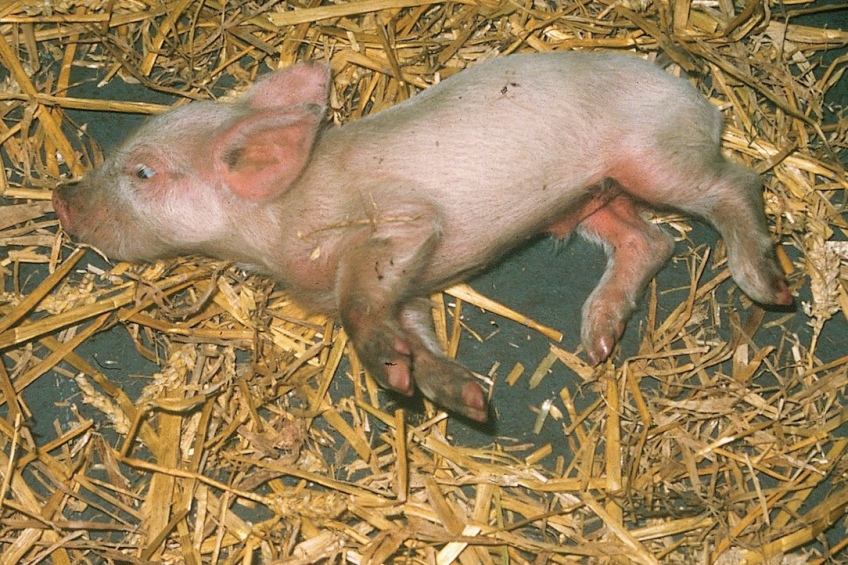Novel, virulent Aujeszky strain in China

Outbreaks of Aujeszky’s Disease (pseudorabies) in China have been worse than in the past due to the emergence of a highly virulent strain.
This was the outcome of a study by Chinese researchers which was published last year in the Canadian Journal of Veterinary Medicine. The disease has been around in China for many years, but used to be kept under control well by vaccination.
The researchers write that in 2012-2013, the disease suddenly broke out in many pig farms in southern China. The study therefore involved a systematic investigation that included virus isolation, genetic and pathological studies, and immunogenicity analysis was carried out with the aim of understanding the pathogenetic and antigenic features of novel isolates of pseudorabies virus (PRV).
Wild type PRV infection
Of 38 tissue samples collected from pigs with clinical signs of pseudorabies on 13 farms in 4 provinces in southern China in 2012-2013, 29 showed wild-type PRV infection by polymerase chain reaction.
Sequence analysis of 5 isolates from the 4 provinces showed that they belonged to a relatively independent cluster that shared 2 insertions of a single amino acid in the gE gene and 1 insertion of 7 amino acids in the gC gene.
In experiments, isolate ZJ01 caused death in 100% of pigs that were either 14 or 80 days old. The serum antibodies to the commercial PRV vaccines had significantly lower neutralising activity against the ZJ01 isolate than against the vaccine strains.
Novel, highly virulent PRV strain
The antigenic relatedness between ZJ01 and the vaccine strains was 0.378 to 0.455. These findings indicated that a novel, highly virulent PRV strain with antigenic variance had spread widely in southern China.
Read also: China’s battle to control pseudorabies
News picked up in United States
The news of the new deadly strain has been picked up by US officials as well. At the 2016 Iowa Pork Congress, Swine Health Information Center (SHIC) executive director, Dr Paul Sundberg, pointed to the difference between the current strain and the one that was in the US in the 80s. At the agricultural website Brownfield, he is quoted to say: “That difference in genetics probably is leading to a real difference in pathogenicity and the ability of this virus to infect and kill pigs.”
In 2013, the US pig industry was taken by surprise by Porcine Epidemic Diarrhoea virus (PEDv), which appeared to have originated in China.











